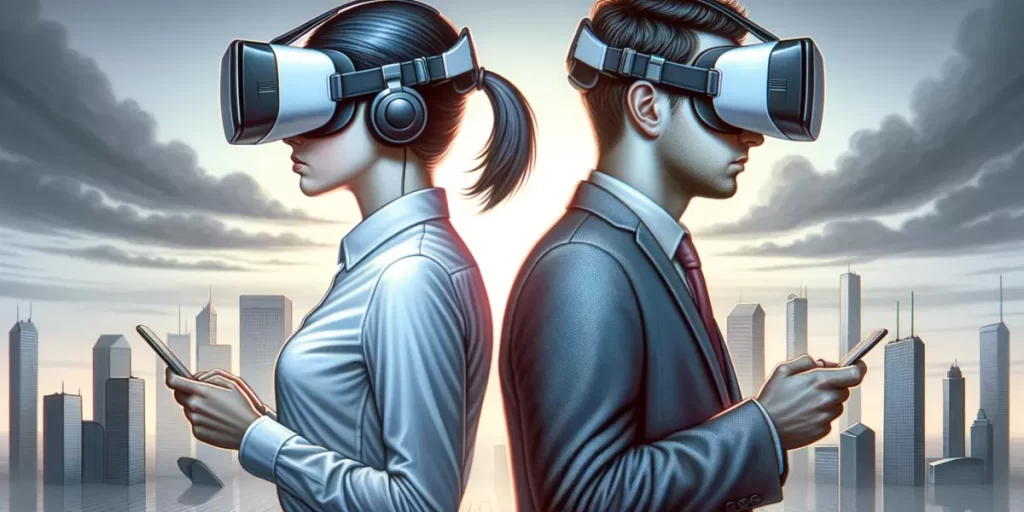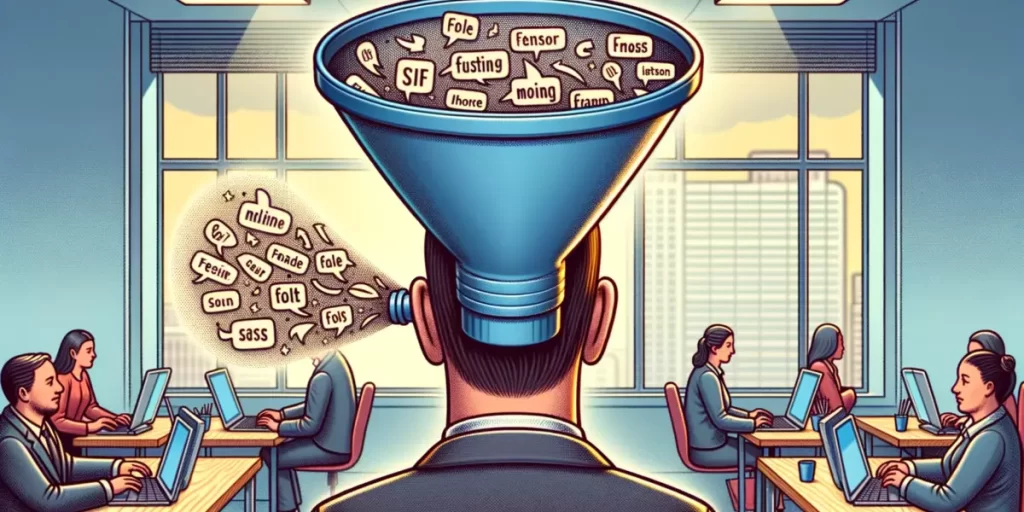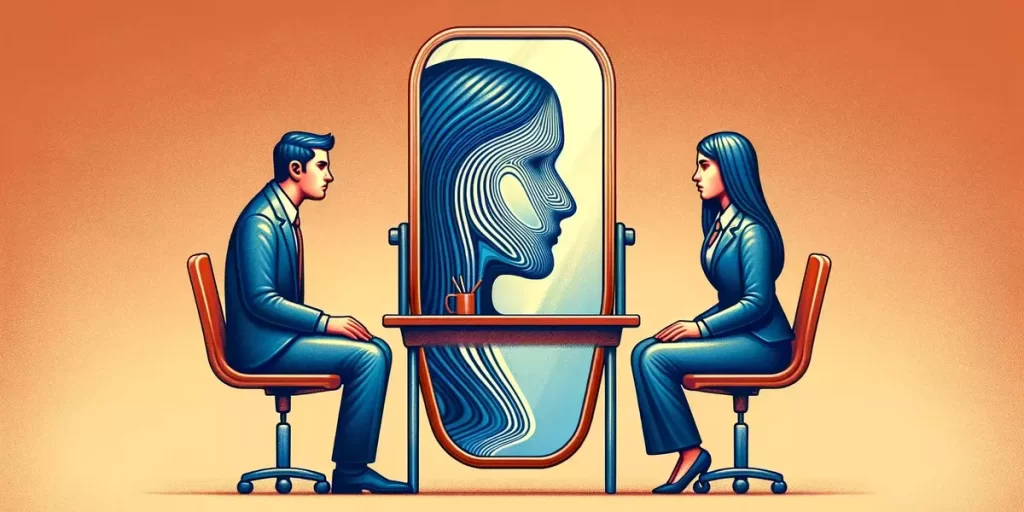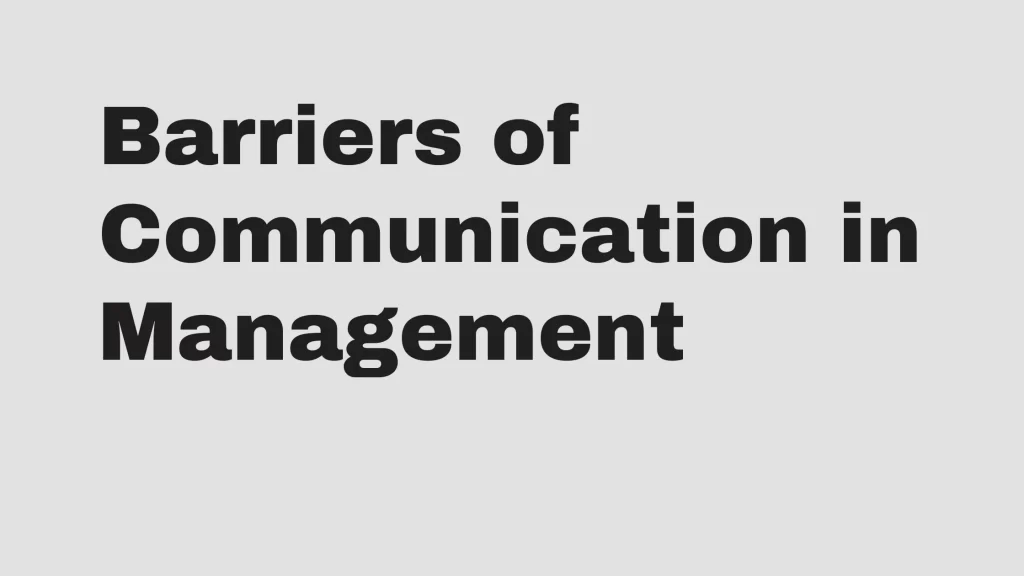Perceptual barriers to communication are the obstacles that arise when two or more individuals have different perceptions of what is being communicated. These can occur in verbal and nonverbal communication, often leading to misunderstandings, confusion, and frustration.
Communication is fundamental to any relationship between two people or an organization and its customers. However, communication can often be hindered by various perceptual barriers. Perceptual barriers are psychological elements that prevent individuals from accurately interpreting the messages being conveyed to them. These barriers can include preconceptions, oversimplifications, and language misunderstandings. Understanding the causes of perceptual barriers is important for communicating with one another and improving relationships effectively.

Understanding and overcoming perceptual barriers in communication is important to ensure effective and efficient communication. By identifying the barriers and taking steps to overcome them, individuals can improve their communication skills and build stronger relationships with others.
Contents
Types of Perceptual Barriers to Effective Communication
Perceptual barriers are obstacles that hinder effective communication between individuals. There are several Types of Perceptual Barriers to Communication, including:
Stereotyping
This occurs when individuals generalize or make assumptions about others based on their group affiliations or characteristics, such as race, gender, age, or socioeconomic status. Stereotyping can lead to biased or prejudiced communication, limiting the effectiveness of the interaction.
Halo Effect
This is a cognitive bias in which an individual’s overall impression of someone is influenced by one prominent characteristic, either positive or negative. The halo effect can cause people to overlook important information or inaccurately assess others based on superficial traits.
Selective Perception
This occurs when individuals focus on specific aspects of a message or situation while ignoring others, often based on their personal biases, beliefs, or expectations. Selective perception can result in misunderstandings and a distorted view of reality. Differences in perception often confuse communication because individuals have unique backgrounds, experiences, and cultural contexts that shape how they interpret messages and express themselves.
Projection
This barrier involves individuals attributing their feelings, thoughts, or motivations to others, often inaccurately. Projection can lead to misinterpretations of others’ intentions and create conflicts or miscommunications.

Attribution Errors
These are mistakes made when individuals try to understand the causes of others’ behavior. The most common attribution errors include the fundamental attribution error (attributing others’ actions to their personality rather than external factors) and the self-serving bias (attributing one’s successes to internal factors while blaming failures on external factors).
Cognitive Dissonance is the discomfort experienced when an individual holds two or more conflicting beliefs, values, or attitudes. Cognitive Dissonance can lead to communication breakdowns as people may avoid, distort, or selectively attend to information that challenges their existing beliefs.
Perceptual Défense
This barrier occurs when individuals subconsciously protect themselves from the information they perceive as threatening or uncomfortable. Perceptual defense can result in the denial, distortion, or avoidance of information, leading to communication difficulties.
Physical Appearance
People often judge others based on their appearance, which can influence how they interpret and respond to communication. These judgments can create perceptual barriers by affecting the communicator’s credibility, likability, or trustworthiness.
Emotional Influence
Strong emotions, such as anger, fear, or sadness, can create perceptual barriers by affecting an individual’s ability to process and interpret information accurately. Emotional states can lead to misunderstandings, misinterpretations, or a lack of empathy in communication.
Language and Cultural Differences
Differences in language, cultural norms, and communication styles can create perceptual barriers by causing misunderstandings, confusion, or offense. Effective communication requires recognizing and adapting to these differences to ensure clarity and mutual understanding.
Overcoming Perceptual Barriers to Communication
Perceptual barriers can hinder effective communication in the workplace, but there are several strategies individuals can use to overcome these obstacles: Perceptual barriers can be challenging to overcome, but several strategies can help improve communication

Active Listening
One of the most effective ways to overcome perceptual barriers is by actively listening to the other person. This involves paying attention to their words, tone of voice, and body language. It also means asking questions and clarifying any misunderstandings to ensure you understand their message clearly.
Empathy
Another important strategy is understanding the other person’s perspective. This means putting yourself in their shoes and trying to see things from their point of view. By doing so, you can gain a better understanding of their thoughts and feelings, which can help to overcome any perceptual barriers that may be present.
Clear Communication
It’s important to communicate clearly and concisely to avoid misunderstandings. This involves using simple language, avoiding jargon or technical terms, and being specific about what you mean. It’s also important to be aware of your tone of voice and body language, as these can convey different meanings to different people.
Feedback
Providing feedback is another effective strategy for overcoming perceptual barriers. This involves giving the other person feedback on their communication style and asking for feedback on your communication style. By doing so, you can identify any areas for improvement and work together to improve communication.
Cultural Awareness
Finally, it’s important to be aware of cultural differences and their impact on communication. This involves being respectful of different cultural norms and practices, as well as being aware of any language barriers that may be present. By doing so, you can ensure that communication is effective and respectful for all parties involved.
By using these strategies, individuals can overcome perceptual barriers and improve communication. It’s important to remember that effective communication requires effort and practice, but by working together, we can improve our ability to communicate and build stronger relationships with others.
Conclusion
Perceptual barriers to communication can lead to miscommunication and can negatively impact productivity in the workplace. By understanding the common perceptual barriers to communication and utilizing the strategies for overcoming these obstacles, individuals can improve communication and create a more inclusive and productive work environment.
Boko Ducky has over 10 years of experience in helping individuals and organizations improve their communication skills.



